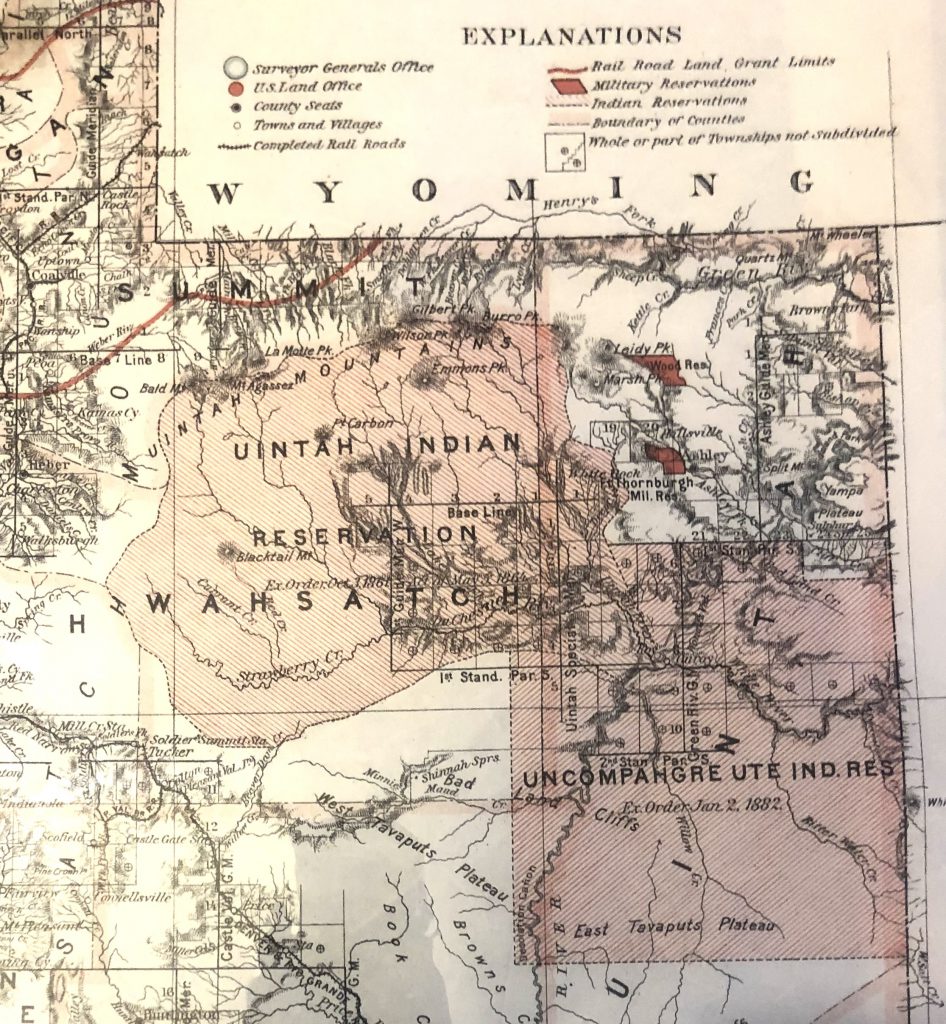Date: September 19, 2022 (Season 5, Episode 3 – 35 minutes long). Click Here for the BuzzSprout version of this Speak Your Piece episode. The above photograph: Westwater, San Juan County, Utah, on the day electicity came to town. Plumbed water is still coming. Courtesy of the Intellectual Reserve, Inc (LDS Church Newsroom, 2022). Are you interested in other episodes of Speak Your Piece? Click Here.
Here are two audio samples from the October 26, 2022 state history conference “WATER AT THE CONFLUENCE OF PAST & FUTURE” (Provo Marriott Hotel & Convention Center, 101 West 100 North, Provo, Utah). To join Utah’s annual history fest click here. In this episode director of Utah’s Indian Affairs Dustin Jansen and ethnohistorian Dr. Sondra Jones, offers sneak peeks into their conference session “Native Utahns: The Struggle to Get and Use Water.” This episode was co-produced by James Toledo (Program Manager, Utah Division of Indian Affairs).
Podcast Content:
Jansen relates the recent history of Westwater, San Juan County, Utah, a rural Navajo community on the edge of Blanding, Utah, which has struggled for fifty years to get water and electricity. Jansen speaks to the combined efforts to overcome long standing obstacles, led by Utah Lieutenant Governor Deidre Henderson, along with the Church of Jesus Christ of Latter-day Saints and the Utah State Legislature.
Jones speaks of the very long road (1861 to the present) for the Ute people gaining access, then losing by forced sales (eminent domain) and finally gaining ownership to water flowing through the Uintah & Ouray Reservation. This includes the backstory to the Strawberry Valley Reservoir–Utah’s first public works project drawing water from the Colorado River drainage system–and the beginning of the federally funded Central Utah Project.

The map segment above is from the 1884 map The Territory of Utah, G. P. Strum (principal draughtsman) for the US General Land Office. Note the two largest federal reservations: to the left, the Uintah Indian Reservation (established by executive order by Pres. Abraham Lincoln, Oct. 3, 1861, opened May 5, 1864) reserved for the northern bands of Utes, and to the right, the Uncompahgre Ute Indian Reservation (established by executive order by Pres. Chester A. Arthur Jan 2, 1882) reservered for some of the southern bands of Utes based largely from Colorado. Note also that Strawberry River, the Uintah River and other Uinta Mountain draining tributaries flow into the Colorado River; and after 1882, these waters were part of the federal grants to these Ute Indian Tribes. Courtesy of Utah Division of State History.
The Utah Division of State History and Utah Museums Association are combining their conferences this year (back to back — museum conference October 24-26 and the Utah history conference October 26).
Bio: Dustin Jansen has been since 2019 the director of the Utah Division of Indian Affairs. Originally from Coyote Canyon, New Mexico, he was born and raised on the Navajo Reservation. Attending school at Utah Valley University (UVU, Orem, Utah), BYU (Provo), and at the University of Utah, Dustin then graduated with a Juris Doctorate from the S.J. Quinney College of Law. From 2006 to 2015 he served as a tribal judge at the Confederated Tribes of the Goshute Reservation. In 2015 he was appointed program coordinator for the American Indian Studies program at UVU. Photo courtesy of the S.J. Quinney School of Law, University of Utah.


Bio: Dr. Sondra G. Jones has a PhD in history from the University of Utah in American and Native American History. Sondra is an adjunct professor in the History Department at Brigham Young University, and is the author of Being and Becoming Ute: The Story of an American Indian (2019). She is also the author of numerous other books and articles on the history of the Ute Nation.
Additional Resources & Readings:
- Long in the Dark, Lights Illuminate Dine Community of Westwater… (Utah Gov. Spencer J. Cox Office, 09.02.22)
- “Residents in Navajo Community Receive Electricity; Water Services to Follow” (LDS Church Newsroom, 09/17/22)
- “Ute Indian Tribe successful in leading national effort to rescind U.S. historical position on tribal water law” (ICT: Indian Country Today, 05/19/22)
Do you have a question or comment, or a proposed guest for “Speak Your Piece?” Write us at “ask a historian” – askahistorian@utah.gov

